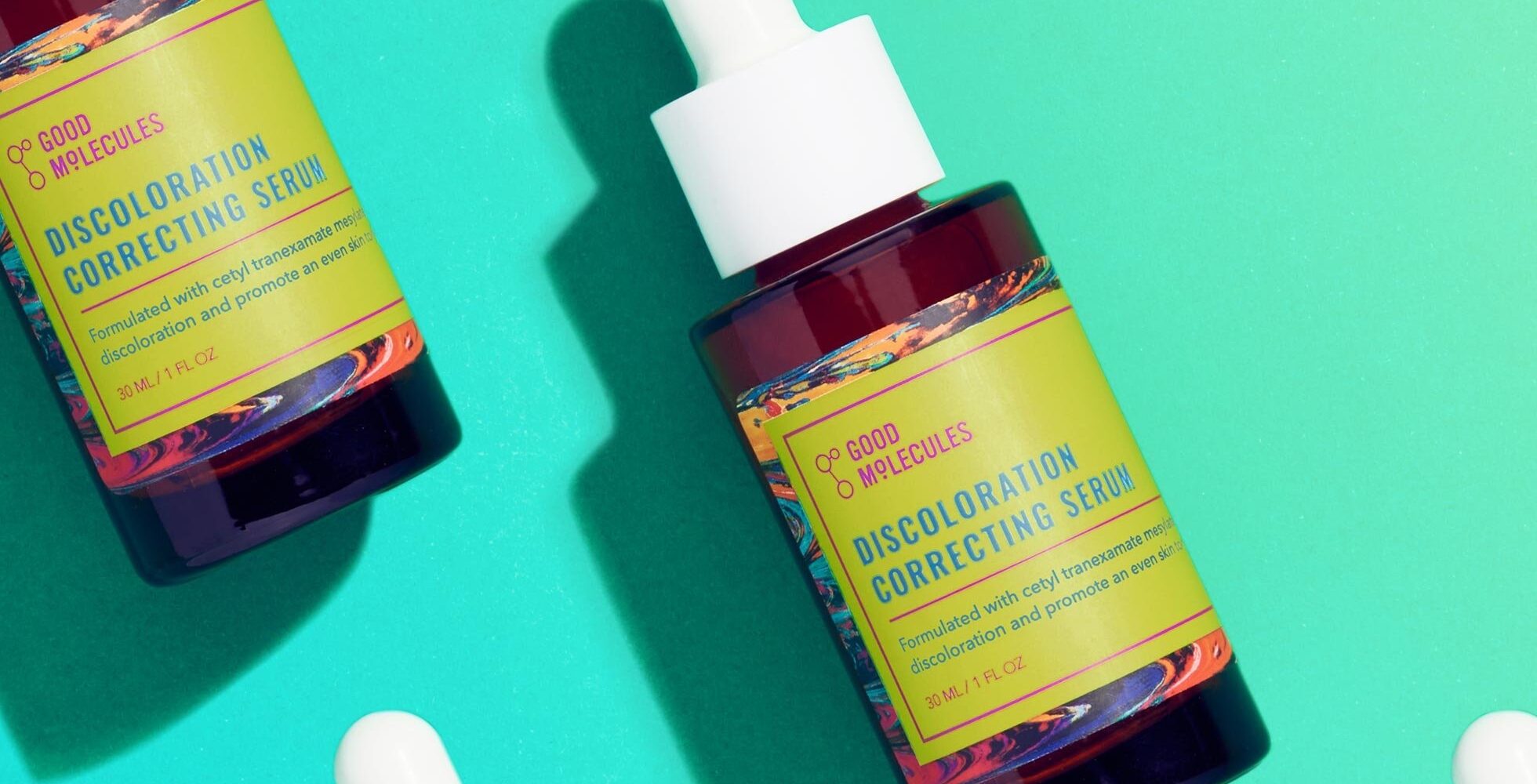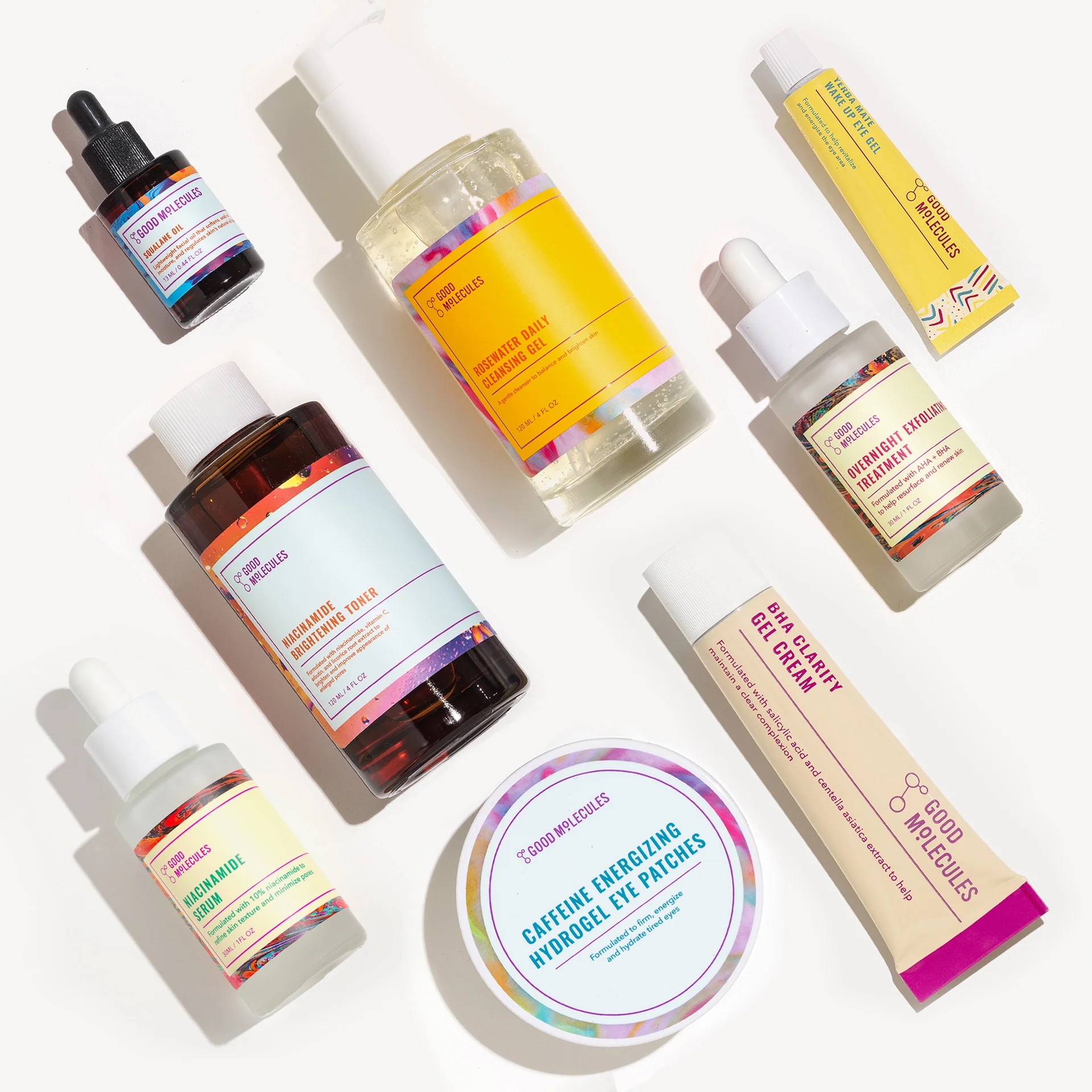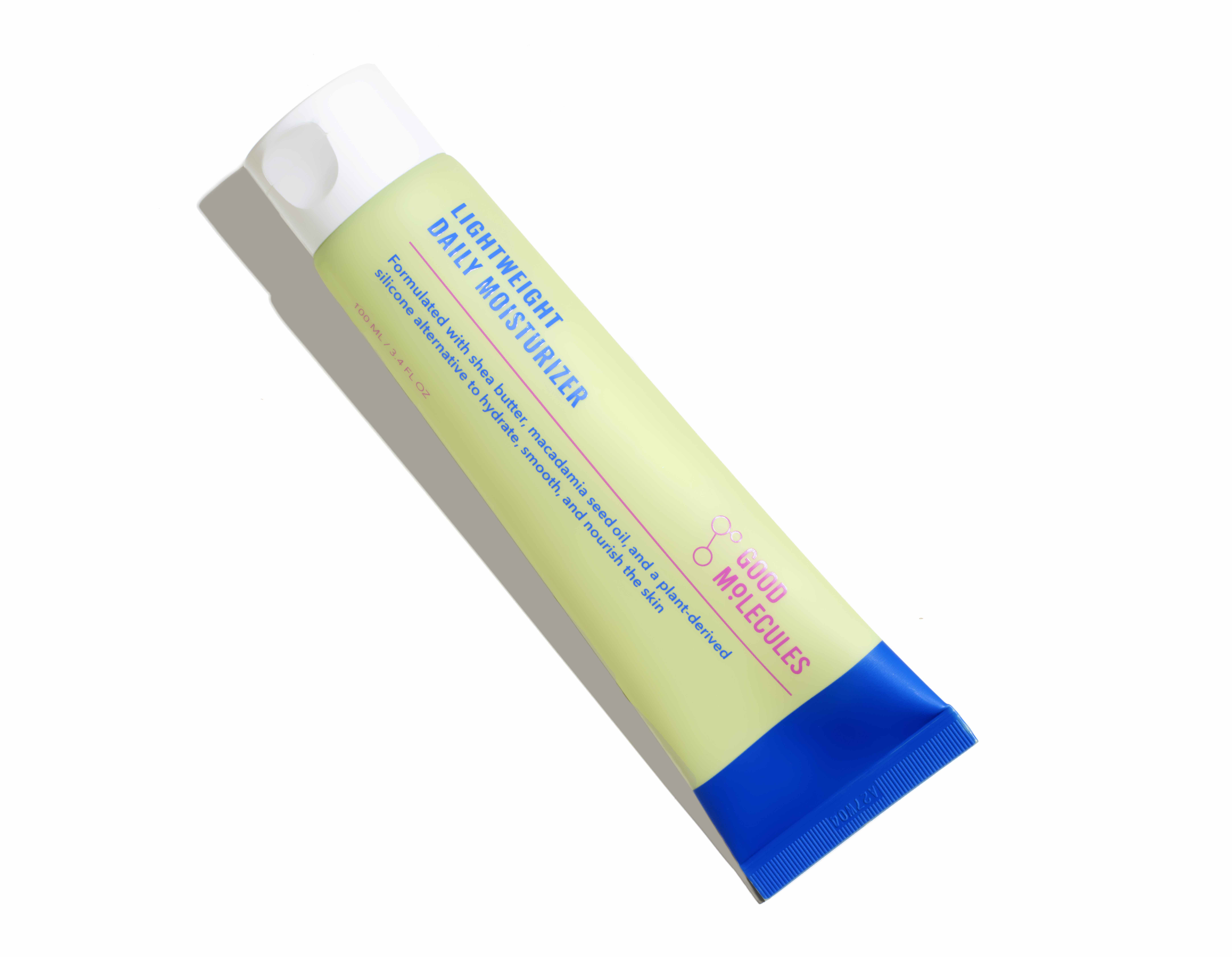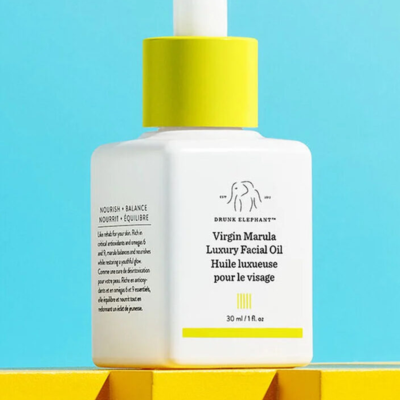
While Affordable Skincare Brands The Inkey List And The Ordinary Raise Prices, Good Molecules Commits To Keeping Them The Same
During two Ulta Beauty quarterly earnings conference calls last year, Good Molecules got a shoutout from CEO Dave Kimbell for sparking customer engagement and notching “nice growth.” Almost all the other skincare brands that scored mentions—Tula, Sun Bum, Coola, Drunk Elephant and Supergoop, for example—are owned by conglomerates or, in Supergoop’s case, a private equity firm.
Good Molecule’s lauded presence among skincare affluence is due in large part to its commitment to consumers without affluence. In an inflationary environment that’s seen affordable skincare brands The Ordinary and The Inkey List increase prices, Good Molecules has promised to keep its prices the same this year—the brand’s 32 stockkeeping units run from $6 to $18—and negotiated lower costs from suppliers and slashed its advertising budget to do so. Good Molecules projects its sales will climb at least 50% this year.
“The best ways that we drive business at Ulta is making products their customers love and not raising prices. At a time when everybody was raising prices, we did not raise prices and that will certainly serve more of Ulta’s guests,” says Nils Johnson, co-founder of Good Molecules and Beautylish. “Maintaining low prices is probably one of the best things we have done.”
Johnson, who began his career at Bergdorf Goodman selling men’s clothing before becoming an angel investor in companies like Warby Parker, Everlane and Affirm, started selling Good Molecules on Beautylish in 2019, and the brand broke into Ulta two years later. Beautylish, an e-commerce platform born in 2010 that financial information resource Crunchbase estimates has secured $25 million in funding, carries about 130 emerging and established brands, including Charlotte Tilbury, Uoma Beauty, U Beauty, La Mer, BeautyStat, Bask, RCMA Makeup, People of Color Beauty and Rae Morris.
Beauty Independent talked to Johnson about the value Good Molecules offers consumers, improving its products, partnering with Ulta, his thoughts on the future of department stores and Beautylish’s role today, and the one brand metric he believes is better than any other in validating consumer resonance.
Good Molecules launched after affordable skincare brands like The Ordinary and The Inkey List. What were the reasons for the launch?
Our business at Beautylish was always dependent on creating value for our customers. So, it was excellent training. When we started Good Molecules, we saw an opportunity because most products don’t work well, and they cost too much. We don’t think about other brands. We think about the customer, and we saw room to make products customers love. That’s our goal.
We didn’t create a brand to earn more margin as a retailer, which is typically why retailers start brands. Look at a retailer and the brands they make. How many of them create brands that service customers as opposed to now we’re making more money because it’s private label? That’s a fundamental difference of approach. We are customer-centric.
What consumer need did you want to address with the brand?
People want things that are easy to understand and use, and that deliver on the attributes or the promise of the product. High level, that’s what we looked at. At the core, Good Molecules exists to solve specific customer concerns. That could be hyperpigmentation, acne, sun protection, dryness and more.
What are the bestsellers?
Our bestsellers include our Niacinamide Brightening Toner and our Yerba Mate Wake Up Eye Gel. There’s a lot of customers looking for solutions to help puffy eyes, and there’s a lot of customers looking to improve skin texture and brightness. This is one of the most simple businesses ever. We are not Space X trying to go to Mars. People have done this before.
I think what’s hard is putting the customer first because you have private equity that doesn’t want that, because you have overhead that doesn’t allow that and because, when people start a brand, they think they are more important than the customer, and that’s never the case.

Are you finding that your customers are particularly price-sensitive today?
Everybody wants more value for their money, everybody. So, we constantly look for ways to deliver more value. Value is not simply price. Value is what you are getting for your money. That could be better ingredients. It could be more volume. It could be better packaging.
Customer expectations are a downward elevator. You always need to be going up unless you will be replaced by someone else. Walk through a store and look at bestsellers. Tell me the last time those products were ever improved? Then, ask yourself, is your first idea usually the best?
What’s a product Good Molecules has improved?
An example would be our Discoloration Correcting Serum. We have increased the active ingredients in that product, and we have continually reduced the level of preservatives. We have reduced the amount of glass used in the dropper. We tried to iterate the product across all vectors if you will.
Many times people make products with high levels of preservatives because they think that’s the safest, and they don’t test a range of levels. The preservative could be effective at a different level and more comfortable for the skin. Efficacy is No. 1 for us, and that immediately correlates to the value the consumer is receiving.
Also, how can we make sustainability improvements? This was our first product where we reduced the amount of glass used in the dropper by 22%. So, we actually increased the active ingredients by 50%, lowered the glass by 22%, and we were able to eliminate some ingredients we felt we could get rid of as well—and we kept the price the same.
Our Lightweight Daily Moisturizer is another example. We eliminated a pump, and we were able to double the size in a tube. So, we went from 50 milliliters for $12 to 100 milliliters for $12. We could have just said, we are getting rid of the pump, and we are going to a tube, but we saw that as opportunity to increase value for our customers by doubling the size of the product. Has anybody given you twice as much for the same price? It almost never happens.
From the beginning, did you think Good Molecules would be at retail outside of Beautylish?
We don’t really think like that. The first thing is, can we make products that are great? Customers will tell you if they love your products and, if they do, naturally you want to make them more convenient for purchase. For us, having a partnership with Ulta serves our customers’ needs because we are more accessible. If we continue to serve our customers, they will demand us to be in more places over time, but the customer will let us know what that looks like.
What’s it like for Good Molecules to be at Ulta?
Ulta is a great partner, so I would suggest for any independent brand, if you have a choice of a retailer to work with, Ulta should be the No. 1 choice. The buyers are great. Working with Ulta, they are like family members. They are good people. They pay fast, and they are extremely supportive in helping you grow as a brand.
Have you learned anything from Ulta that you apply to Beautylish?
What’s interesting in being on the other side is you appreciate the importance of basics, the fundamentals of retail like treating people well. They just remind you, this is what a good partner looks like. To be a good partner, you have to be someone that people want to deal with.

Good Molecules and Beautylish are known for their work with influencers. How does the brand work with influencers?
We think of influencers as anyone that has authority to help spread the word about our products. That could be your mother who says, “Wear your SPF?” or “Why are you wasting your money? You should be using Good Molecules.” We certainly work with amazing people on social media, and we lucky to have had their support. However, we think of influencers in a more holistic way.
Practically, that means we do traditional social media collaborations, and we also give products to people that may have not been considered by other brands to be influencers that we think have influence. It means working with more people that have smaller followings, but maybe have closer relationships. That could be a hairdresser with a small Instagram following.
How do you handle customer service differently from others?
For us, it’s always been about standing by what the customer thinks. If they are not happy for any reason, we want to give them their money back, but customer service also means many different things. It means being at Ulta because shipping will never be as fast as the store you are passing by every day. Ease of use and making your product easy to understand are also great customer service.
The Lightweight Daily Moisturizer was previously called Silicone-Free Priming Moisturizer. We found the name was confusing to customers. If you have to explain something to your customers, there’s a problem. If someone doesn’t understand priming, that’s bad customer service.
What do you see as Beautylish’s role today?
A big part Beautylish’s success is having great brands and great service. We have a reputation for great service, and we continue to invest in that, finding ways to make it easier for people to shop, and we are always looking for up-and-coming brands we think our customers would love as well as partnering with amazing established creators.
What can brands do to have a better relationship with Beautylish?
Typically, the thing people want to know is, what can I do to sell more? It usually comes down to, what can you do to create more value for your customers? How can you make the experience more exciting? How can you make products that they love? How can you build more awareness so they know about you? Those are fundamentals that never change—and they are easy questions not to ask.
Ulta’s job is not to build Good Molecules. Ulta’s job is to help make us accessible in their stores to their customers and our customers. We are happy to send people to Ulta if that is the best experience for them, and we think long term that convenience is a very important piece of customer loyalty.
What’s your sense of the skincare market today?
I don’t think so much about the market. I think more about customers, but the opportunity in today’s market is as large and open as it’s ever been. One of the reasons is that the brands that have been the most successful either got invested in by private equity or purchased by large conglomerates. Neither of those typically place customers first.

What’s been your funding path?
We were fortunate to find great supportive investors, and I think the most important thing is to find people that have a shared vision. It’s not to think that the investor has the answer. An investor is money. People should choose their investors carefully because it’s one thing in a company that rarely changes. Once you are married, you are married.
You used to work at Bergdorf Goodman. Do you believe department stores have a future?
Yes, the best department stores do. People that recognize the value they create for customers always will have a future, but that means you have to maintain an up-to-date point of view and realize your customer is on a downward elevator. Bergdorf was slow to e-commerce, and they got beat by Net-a-Porter.
Bergdorf was one of the best specialty retailers in the world, and I was lucky to have worked there. I learned a lot, but clothes are not more important than the customer experience and, if the customer is demanding to shop online and you deliver an experience there that’s subpar, customers will vote with their dollars. How do you keep your assortment relevant, and how do you stay customer-focused even if that requires you to think outside of the confines of your retail store?
Department stores are oversized relative to the opportunity. If you go into a department store and it has X amount of square feet, does it have X amount of quality merchandise? Probably not. I think stores are oversized for the amount of desirable merchandise they have. Then, it’s like filler. When you go and see that in a store, your brain says, “This is not for me.” There’s a right-sizing that could happen.
What’s a metric you look at to validate that you’re putting customers first?
NPS is the core of what great brands live on. What makes NPS interesting is you can benchmark it across companies in all industries. You can look at Chick-fil-A to Apple. The cool thing with NPS is that, as your NPS score moves up, your word of mouth grows exponentially. It’s the most important thing to focus on, and it’s one of the hardest things to improve. It doesn’t reward you in the short term.
So, what do people do instead of NPS? They do Facebook ads, discounts and promotions, and influencer collaborations because those reward you immediately. Our strategy is different. We want to deliver high value and, if we are, we know we will inherently drive NPS. If we are not, then the product needs to be improved. NPS is a great North Star to tell you how you are doing.
How can you build Good Molecules?
If you look at our assortment today, it’s fairly treatment-based, meaning serums, lotions and creams. So, I would say we can build more of a complete regimen for our customers. There’s also physical availability. We are not really selling abroad. Where are our customers asking us to be to improve their shopping experience?
This interview has been edited for length and clarity.





Leave a Reply
You must be logged in to post a comment.